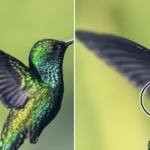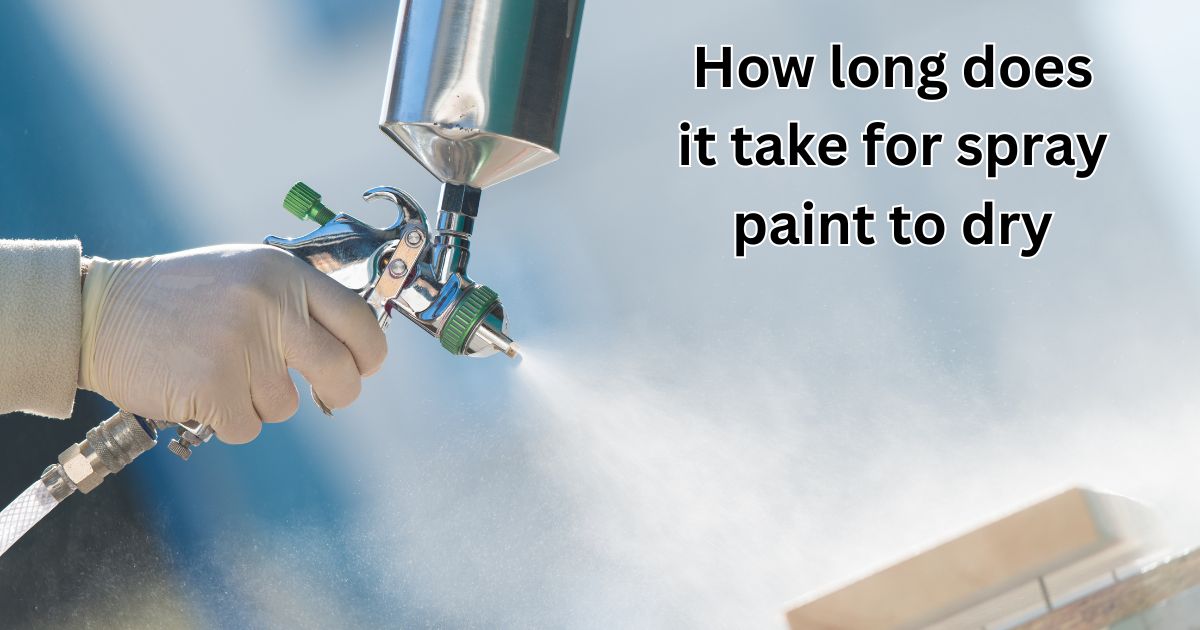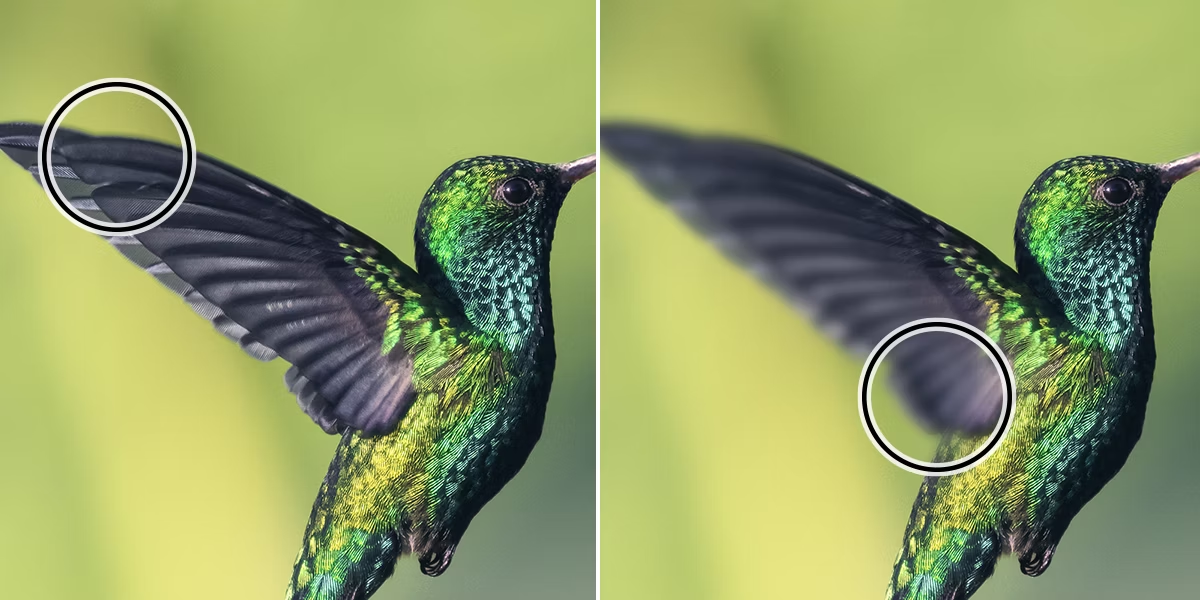Spray paint is a versatile and popular medium used for a wide range of applications, from DIY projects to professional finishes. It consists of a paint solution that is atomized into fine droplets and expelled through an aerosol can. The convenience of spray paint lies in its ease of use and ability to cover surfaces evenly and quickly. Typically, spray paint is formulated with a combination of solvents, pigments, and resins, which work together to provide a smooth, durable finish. Understanding how long does it take for spray paint to dry is crucial for achieving the best results, as it affects not only the appearance but also the durability of the paint job.
Importance of Understanding Drying Time
Knowing how long it takes for spray paint to dry is essential for several reasons. Firstly, it helps in planning and managing time effectively, especially for projects that require multiple coats or touch-ups. Secondly, proper understanding of drying times prevents common issues like smudging, uneven application, or dust contamination, which can ruin a finished project. Lastly, recognizing the drying time helps in deciding when it is safe to handle or apply additional layers, ensuring a professional-quality result. This knowledge empowers both amateur and seasoned painters to achieve flawless finishes with confidence.
Factors Influencing Spray Paint Drying Time
Several factors influence how long it takes for spray paint to dry, including the type of paint, surface material, and environmental conditions. Different types of spray paints, such as acrylic, enamel, and lacquer, have varying drying times due to their chemical compositions. Similarly, the nature of the surface being painted—whether metal, wood, plastic, or glass—affects the paint’s adherence and drying process. Environmental conditions like temperature, humidity, and airflow play a significant role in the drying time, as they impact the evaporation rate of the solvents in the paint. Understanding these factors is key to achieving optimal results and ensuring a smooth, even finish.
The Science Behind Spray Paint Drying
Chemical Composition of Spray Paint
Spray paint is made up of a blend of solvents, pigments, resins, and propellants. The solvents dissolve the pigments and resins, allowing them to be sprayed in a fine mist. As the paint is applied, the solvents evaporate, leaving behind the pigments and resins that form the final coating. The rate at which these solvents evaporate determines the drying time. For instance, paints with fast-drying solvents will generally dry quicker than those with slower solvents. Additionally, the resins used in the paint influence the final hardness and durability of the finish.
The Evaporation Process
The drying of spray paint primarily involves the evaporation of solvents. As the solvent evaporates, the paint starts to form a solid film on the surface. This process can be influenced by several factors, including the temperature and humidity of the environment. In warm, dry conditions, solvents evaporate more quickly, leading to faster drying times. Conversely, in cooler or more humid conditions, the evaporation process slows down, extending the drying period. Understanding this process helps in adjusting the application technique and environmental conditions to achieve the desired drying time.
How Spray Paint Adheres to Surfaces
Spray paint adheres to surfaces through a combination of chemical bonding and physical properties. The resins in the paint create a bond with the surface, while the solvents help the paint penetrate and adhere to it. The surface preparation plays a crucial role in this process; clean, smooth surfaces allow for better adhesion and a more even finish. On the other hand, surfaces with contaminants or rough textures may lead to poor adhesion and longer drying times. Proper surface preparation ensures that the spray paint adheres well and dries uniformly, resulting in a professional-looking finish.
Factors That Affect Spray Paint Drying Time
Type of Spray Paint
Acrylic Spray Paint
Acrylic spray paint is known for its quick-drying properties. How long does it take for spray paint to dry? Typically, acrylic spray paint dries to the touch within 15 to 30 minutes, and it is usually fully dry within one to two hours. This fast drying time is due to the water-based solvents in acrylic paint, which evaporate quickly. Acrylic spray paint is a popular choice for indoor projects and quick touch-ups, as it allows for fast completion of tasks without long waiting periods. However, despite its quick drying, it is important to allow it to cure fully for the best durability and adhesion.
Enamel Spray Paint
Enamel spray paint, on the other hand, generally has a longer drying time compared to acrylics. Enamel paints typically take 30 to 60 minutes to dry to the touch and can take up to 24 hours to be fully dry. The drying time for enamel spray paint is longer due to the slower evaporation rate of the solvents used. Enamel paint is favored for its durability and glossy finish, making it suitable for both indoor and outdoor applications where a tough, long-lasting coating is desired.
Lacquer Spray Paint
Lacquer spray paint is known for its fast-drying characteristics. It usually dries to the touch within 10 to 20 minutes and is often fully dry within one hour. The quick drying time of lacquer paint is attributed to the high volatility of its solvents. Lacquer provides a high-gloss finish and is commonly used in automotive and furniture refinishing. While its fast drying time is advantageous, it is important to handle the painted surface with care until it is fully cured to avoid any damage.
Surface Material
Metal
Metal surfaces tend to interact differently with spray paint compared to other materials. Typically, spray paint dries on metal surfaces faster than on porous materials due to the smooth, non-porous nature of metal. However, the drying time can vary depending on the type of metal and the paint used. For instance, spray paint on clean, rust-free metal can dry to the touch in as little as 15 minutes and be fully dry within one to two hours. Proper surface preparation, such as sanding and priming, can improve adhesion and drying times.
Wood
Wood surfaces are porous and can absorb spray paint, which can affect the drying time. On wood, spray paint generally takes longer to dry compared to non-porous surfaces. Typically, wood surfaces require 30 minutes to one hour to dry to the touch and can take up to 24 hours to fully dry. Applying a primer before painting can help seal the wood and reduce drying time. Additionally, the type of wood and its finish can influence how quickly the paint dries and adheres.
Plastic
Spray paint on plastic surfaces can be challenging due to the non-porous and sometimes slick nature of the material. Plastic surfaces often require a specific type of spray paint designed for plastic to achieve proper adhesion. The drying time on plastic surfaces usually ranges from 20 to 40 minutes to the touch and may take up to 12 hours to be fully dry. Ensuring the plastic is clean and using a plastic primer can enhance the paint’s adherence and drying time.
Environmental Conditions
Temperature
Temperature plays a significant role in the drying time of spray paint. Generally, warmer temperatures accelerate the evaporation of solvents, leading to faster drying times. For optimal results, spray paint should be applied in temperatures between 60°F and 75°F (15°C to 24°C). In cooler temperatures, the solvents evaporate more slowly, extending the drying time. Extreme cold can also affect the paint’s consistency and performance. Therefore, it’s important to monitor the temperature and adjust the application environment as needed.
Humidity
Humidity affects the drying time of spray paint by influencing the rate of solvent evaporation. High humidity levels can slow down the evaporation process, resulting in extended drying times. This is because moisture in the air can interfere with the paint’s ability to dry and cure properly. On the other hand, low humidity conditions can promote quicker drying. Using a dehumidifier or choosing a time with lower humidity levels can help achieve a more efficient drying process.
Airflow
Proper airflow is essential for efficient drying of spray paint. Good ventilation helps facilitate the evaporation of solvents, speeding up the drying process. In well-ventilated areas, spray paint dries more quickly as the air carries away the evaporated solvents. Conversely, in areas with poor airflow or enclosed spaces, the drying time can be significantly longer. Ensuring adequate ventilation during and after application can help achieve faster and more uniform drying.
Average Drying Times for Different Types of Spray Paint
Acrylic Spray Paint Drying Time
Acrylic spray paint is favored for its rapid drying capabilities. On average, acrylic spray paint dries to the touch within 15 to 30 minutes. For a fully dry finish, it typically takes one to two hours. This quick drying time makes acrylic paint ideal for projects that require fast turnaround or multiple coats. However, while the surface may feel dry to the touch, it is essential to allow the paint to cure completely for optimal durability and adhesion.
Also Read: The Batmobile Limousine
Enamel Spray Paint Drying Time
Enamel spray paint generally takes longer to dry compared to acrylics. On average, enamel paint dries to the touch within 30 to 60 minutes. For a fully cured finish, it can take up to 24 hours. The extended drying time of enamel paint is due to the slower evaporation of its solvents. Despite the longer wait, enamel paint provides a durable and glossy finish suitable for a range of applications, including outdoor projects and high-traffic areas.
Lacquer Spray Paint Drying Time
Lacquer spray paint is known for its fast-drying properties, making it a popular choice for various applications. So, how long does it take for spray paint to dry? Typically, lacquer paint dries to the touch within 10 to 20 minutes, and it is often fully dry within one hour. The rapid drying time is due to the high volatility of its solvents. Lacquer provides a high-gloss finish and is commonly used for automotive and furniture refinishing projects. While it dries quickly, it is important to handle the surface with care until it is fully cured to avoid any potential damage.
How to Speed Up Spray Paint Drying Time
Use of a Heat Source
Applying heat is an effective way to speed up the drying time of spray paint. Using a heat gun or hairdryer on a low setting can help accelerate the evaporation of solvents. Be cautious not to apply too much heat, as excessive temperatures can cause the paint to bubble or blister. Heat can be particularly useful in cooler environments where natural drying times are extended. Ensure the area is well-ventilated when using heat sources to avoid potential hazards.
Application of Thin Coats
Applying thin coats of spray paint is another method to reduce drying time. Thin layers of paint dry more quickly than thick coats because there is less material for the solvents to evaporate from. Multiple thin coats allow each layer to dry faster and provide a more even finish. It’s important to allow each coat to dry before applying the next one to prevent runs and drips.
Importance of Ventilation
Good ventilation is crucial for speeding up the drying process. Adequate airflow helps carry away the evaporated solvents, promoting faster drying. If painting indoors, ensure windows and doors are open, and use fans to increase air circulation. In outdoor settings, choose a breezy day to aid the drying process. Proper ventilation not only speeds up drying but also helps reduce the risk of inhaling potentially harmful fumes.
Specialized Fast-Drying Spray Paint
For projects requiring ultra-fast drying times, consider using specialized fast-drying spray paints. These paints are formulated with accelerants that significantly reduce drying times compared to standard formulations. Fast-drying spray paints are ideal for time-sensitive projects and can help achieve a quick turnaround. Always follow the manufacturer’s instructions for optimal results and ensure the paint is suitable for your specific application.
Common Mistakes That Prolong Drying Time
Applying Too Thick a Coat
One of the most common mistakes that prolong drying time is applying too thick a coat of spray paint. Thick layers take longer to dry because the solvents have to evaporate from a larger volume of paint. This can lead to uneven drying, runs, and drips. To avoid this issue, apply multiple thin coats rather than one thick layer. Thin coats dry more quickly and provide a smoother, more even finish.
Inadequate Surface Preparation
Inadequate surface preparation can also extend drying times and affect the final result. Surfaces that are not properly cleaned or prepped may not allow the paint to adhere properly, leading to longer drying times and potential paint failure. Ensure the surface is clean, dry, and free of contaminants before applying spray paint. For best results, sand rough surfaces and apply a suitable primer if necessary.
Poor Environmental Conditions
Poor environmental conditions can significantly impact drying times. High humidity, low temperatures, or inadequate airflow can all slow down the evaporation process and prolong drying times. To mitigate these issues, choose an appropriate time and place for painting, considering factors such as weather and ventilation. Using heaters, dehumidifiers, or fans can help create a more favorable environment for faster drying.
Step-by-Step Guide: Testing if Spray Paint is Dry
The Touch Test
The touch test is a simple method to determine if spray paint is dry. Gently touch the painted surface with a clean, dry fingertip. If the paint feels tacky or leaves a fingerprint, it is not yet fully dry. The touch test is useful for checking if the paint is dry to the touch, but it does not indicate if the paint is fully cured.
The Smudge Test
For a more thorough assessment, perform the smudge test. Lightly rub a clean cloth or your fingertip over a small, inconspicuous area of the painted surface. If the paint smudges or transfers onto the cloth, it is still drying. This test helps determine if the surface is safe to handle or if additional drying time is needed.
The Fingernail Test
The fingernail test involves gently scratching the surface with a fingernail. If the paint resists scratching and does not lift or smudge, it is likely dry. This test is effective for checking the hardness and durability of the paint. However, be cautious not to apply too much pressure, as it could damage the finish.
How Long Does It Take for Spray Paint to Dry on Different Surfaces?
Drying Time on Metal
Spray paint typically dries relatively quickly on metal surfaces due to their smooth, non-porous nature. On average, spray paint dries to the touch on metal in 15 to 30 minutes and is fully dry within one to two hours. Proper surface preparation, such as cleaning and sanding, can enhance adhesion and reduce drying time. Metal surfaces are ideal for a range of spray paint applications, including automotive and industrial projects.
Drying Time on Wood
Wood surfaces, being porous, tend to absorb spray paint, which can extend the drying time. Generally, spray paint dries to the touch on wood within 30 minutes to one hour and may take up to 24 hours to be fully dry. Using a primer before painting can help seal the wood and improve drying times. For best results, apply thin coats and allow each layer to dry before adding more.
Drying Time on Plastic
Spray paint on plastic surfaces can be challenging due to their non-porous nature. On average, spray paint dries to the touch on plastic in 20 to 40 minutes and may take up to 12 hours to fully dry. Using spray paints specifically designed for plastic and ensuring proper surface preparation can improve adhesion and reduce drying times. Be patient and allow adequate time for the paint to cure completely.
Drying Time on Glass
Glass surfaces are smooth and non-porous, allowing spray paint to dry relatively quickly. Typically, spray paint dries to the touch on glass within 15 to 30 minutes and is fully dry within one to two hours. Glass surfaces are often used for decorative projects and require careful handling to avoid smudges or fingerprints before the paint is fully dry.
How Long Does It Take for Spray Paint to Cure?
Difference Between Drying and Curing
It’s important to distinguish between drying and curing when dealing with spray paint. Drying refers to the process where the paint surface becomes dry to the touch, while curing involves the paint reaching its full hardness and durability. Curing is a longer process that continues after the paint has dried. Understanding this difference helps in determining when a painted surface is ready for use or handling.
Typical Curing Times for Spray Paint
Curing times for spray paint vary depending on the type of paint and environmental conditions. Generally, spray paint takes about 24 to 48 hours to cure fully. Some fast-drying paints may reach full cure in less time, while others may require a longer period. Curing times are influenced by factors such as temperature, humidity, and the thickness of the paint layer. Following the manufacturer’s guidelines for curing times ensures optimal results and durability.
Factors That Affect Curing Time
Several factors affect the curing time of spray paint, including temperature, humidity, and the thickness of the paint layer. Higher temperatures and lower humidity levels generally speed up the curing process, while cooler temperatures and higher humidity can prolong it. Additionally, thicker coats of paint may take longer to cure compared to thinner layers. Proper environmental conditions and application techniques contribute to achieving the best curing results.
Conclusion
Understanding how long does it take for spray paint to dry is crucial for achieving a successful and professional finish. Factors such as the type of spray paint, surface material, and environmental conditions play a significant role in drying times. By considering these factors and employing techniques to speed up the drying process, you can achieve optimal results for your projects.
To ensure the best results, apply spray paint in the recommended temperature and humidity conditions, use thin coats for faster drying, and ensure proper ventilation. Additionally, allow sufficient time for both drying and curing to avoid issues such as smudging or uneven finishes. Following these tips will help you achieve a smooth, durable finish.
Mastering the art of how long does it take for spray paint to dry requires a combination of understanding the science behind the process and applying best practices. By being aware of the factors that influence drying times and implementing effective techniques, you can enhance the quality and efficiency of your spray paint projects. Whether you’re a DIY enthusiast or a professional painter, this knowledge will help you achieve superior results and a flawless finish.










